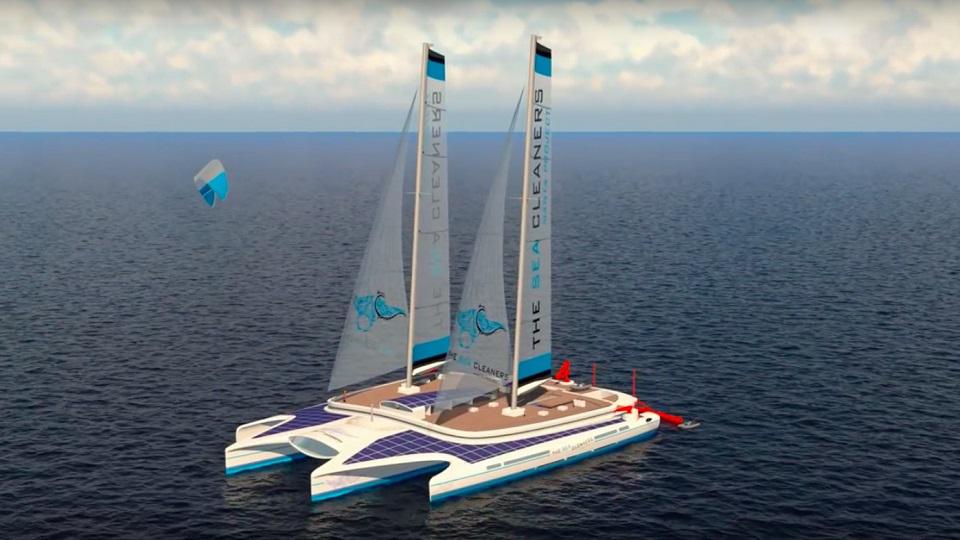After a crowfunding campaign in December 2016 which had raised € 150,000 (twice as much as the sum initially planned)), the association was able to work on the design of the Manta.6 design offices spent nearly 3000 hours of work to study the feasibility of the project and pass it to the reality stage.
Un travail qui permet aujourd'hui de découvrir la maquette au 1/80ede la version finale du bateau.Manta will be a quadrimaran collector of marine waste with numerous on -board technologies, with a length of 70 m, with a width of 49 m and 61 m high (the Arc de Triomphe measures 50 m high)).
The Manta will recover floating plastic macro-waste before they degrade and pollute the oceans irreversibly.This factory ship will use the cutting-edge tools of technology and will have everything you need to "work" on site: collect, sort, compact and store plastic waste.
Three collectors will be installed between the shells of the ship in the form of treadmills to quickly reassemble large quantities of plastics.The ship can store 250 tonnes of waste in its shells before bringing it to land, where they will be supported by suitable recycling centers.
By its design, the Manta is also a technological challenge since it must produce a minimum carbon footprint.It will therefore be fueled by several renewable energy sources.It will be propelled by four dynamic rigging and four electric motors, and will carry several combined technologies for renewable energy production associated with an optimized energy storage system.
The boat deck will be covered with 2,000 m2 of solar panels and two vertical wind turbines will use the force of the wind to produce electricity.He can thus move and collect in autonomy, but also move on all areas of high pollution density (estuaries, coastal areas...)).
To reduce pollution at sea, it is also important to reduce it to the ground.Thus, the Manta is part of a global project which aims to raise awareness of the consumption of plastic and its waste.In the same line, this project is intended to become a lever for the circular economy.

The plastics collected will constitute the basis of a dynamic of local and circular economy.MANTA will allow you to initiate or develop waste transformation initiatives in raw materials and to energize the economy of countries where collections will be carried out.
The association also pursues a scientific goal of observation and analysis.Each collection will be geolocated, quantified and qualified thanks to the implementation of a real laboratory on board the ship.All data will then be published in Open Data in order to allow access to the entire international community.
9 million tonnes of plastic waste in the seas per year
1 million birds killed per year
100,000 marine mammals killed each year
+ 1,400 marine species already impacted
70 % floating waste ends up flowing after one year
450 years for a plastic bottle to deteriorate (immersed this time is infinite))
Without forgetting the economic impacts (degradation of coastal tourist activity, destruction of fishery resources...)) and humans (sterility, hormonal disturbances, growth disorders, etc.)).
Next: Serene vacation guide








